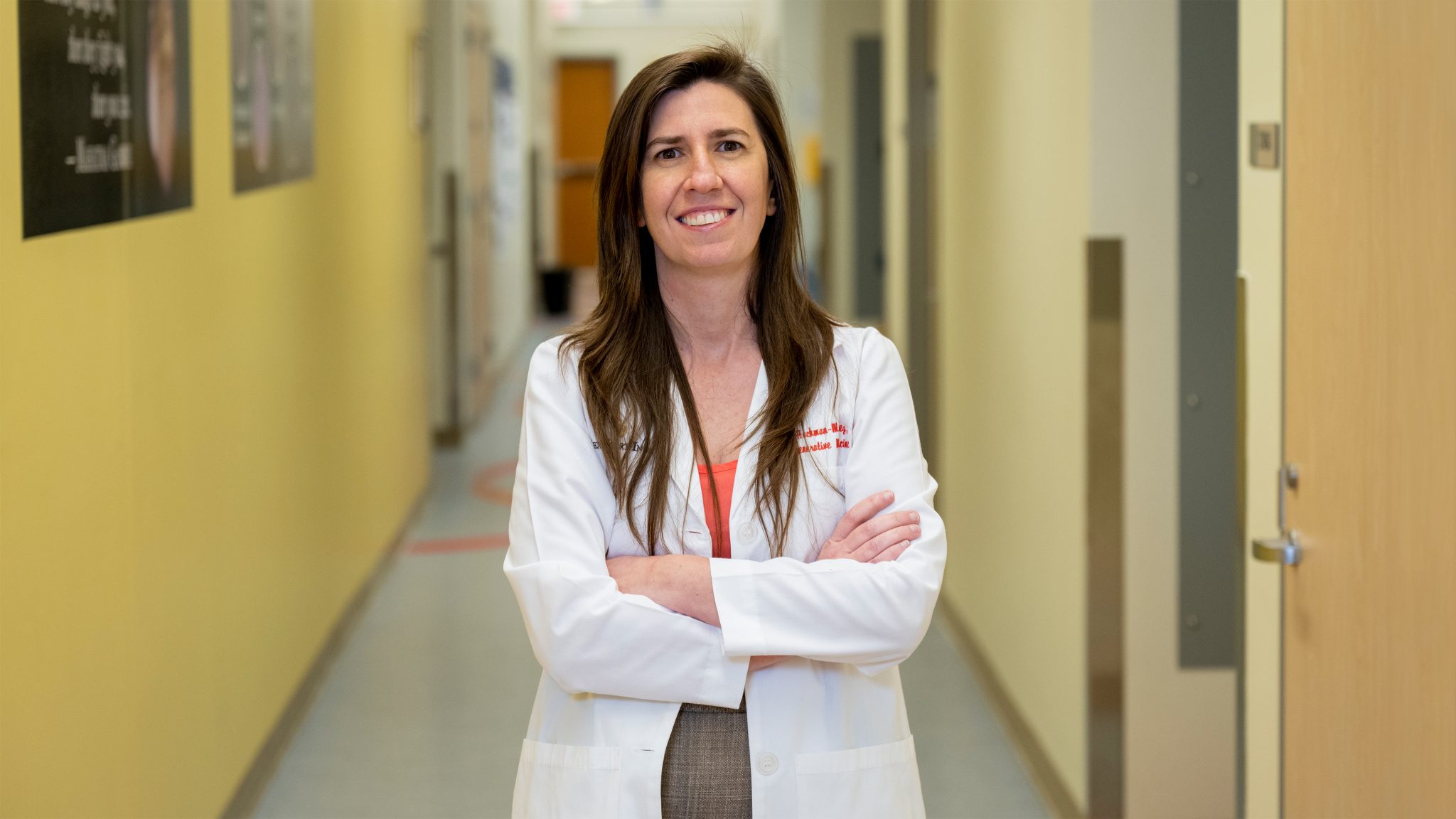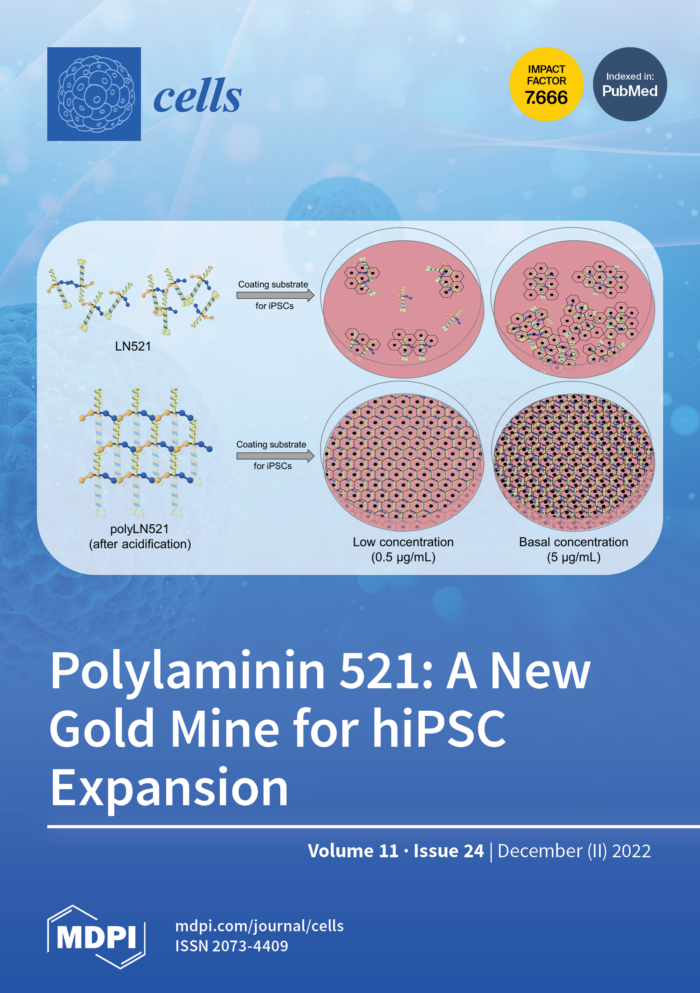Polylaminin 521: A New Gold Mine for the Expansion of Stem Cells for Regenerative Medicine Applications

Under the direction of Dr. Camila Hochman-Mendez in the Regenerative Medicine Research Department at The Texas Heart Institute, researchers are working to further refine the science of creating bioengineered organs and tissues. As part of this greater goal, they recently discovered a novel method to expand pluripotent stem cell populations in culture using a polymerized extracellular matrix protein. The details of these groundbreaking findings were recently published in Cells, and a figure illustrating their key discovery was featured on the issue cover.

One of the essential requirements for the reconstruction of new tissues is an abundance of stem cells that give rise to the various cell types that compose the tissue. During the last two decades, human induced pluripotent stem cells (hiPSCs) have shown promise for regenerative medicine applications. hiPSCs are adult tissue cells that have been reprogrammed back into an embryonic-like pluripotent state, which means that they can self-renew while maintaining the ability to become almost any cell type in the human body. However, a key challenge of expanding hiPSC populations in culture is identifying a suitable material on which they grow that maintains their pluripotent state, and that is cost-effective for the large-scale production of the multibillion cells required for tissue and organ bioengineering.
To overcome this challenge, Dr. Hochman-Mendez and her team have been working to make the large-scale expansion of hiPSCs more feasible and cost-effective. Stem cells expanded in culture are plated on a surface covered with a thin protein coating that mimics the extracellular matrix, which is the structurally supportive substance in native tissues on which cells attach and grow. In previous years, the research team found that one protein in the extracellular matrix—laminin 521—could be used to grow and maintain hiPSCs in the pluripotent state in a large-scale proportion. However, it became clear that technical improvements were critical for minimizing the amount of laminin required for hiPSC cultivation while maximizing cell growth.
As Dr. Hochman-Mendez recalls, “Although laminin 521 could support hiPSC expansion, we believed it lacked the uniformity to provide a continuous coating substrate for maximal cell growth. The uniformity of other laminins has been improved by a process called polymerization, where laminin molecules are combined to form a continuous chain. So, we decided to test the effectiveness of polymerized laminin 521 at a very low concentration—a concentration 10-fold lower than that of unpolymerized laminin 521 required for hiPSC expansion,” she explains. The application of this technique strengthens Dr. Hochman-Mendez’s long-term collaboration with Dr. Tatiana Coelho-Sampaio from the Federal University of Rio de Janeiro, Brazil.
The researchers found what they refer to as a gold mine. The polymerization of laminin 521 into polylaminin 521 produced a honeycomb-like network evenly distributed across the plate. In addition, hiPSCs could be efficiently expanded and maintained on a polylaminin 521 coating with a very low, cost-effective concentration.
As summarized by Dr. Hochman-Mendez, “This highly efficient method using a very low concentration of polylaminin 521 supported the healthy expansion of hiPSCs, which was indicated by their morphology, gene expression, normal chromosomes, and ability to transform into various cell types. These findings have opened the possibility of using polylaminin 521 to produce a biologically similar lining for bioengineered tissues in the future.” And, as stated by Dr. Fernanda Mesquita, the leading scientist on the project, “This technology can advance the field by enabling the generation of the multi-billion cells required for engineering cardiovascular tissues and other areas of regenerative medicine, as well as disease modeling, drug discovery, and human developmental biology. This optimization allows for a decreased workload and cost-feasible experiments, thus enabling us to mimic what happens in nature, improving the cellular environment.”
Read Report
Mesquita FCP, Leite ES, Morrissey J, Freitas C, Coelho-Sampaio T, Hochman-Mendez C. Polymerized Laminin-521: A Feasible Substrate for Expanding Induced Pluripotent Stem Cells at a Low Protein Concentration. Cells. 2022 Dec 7;11(24):3955. doi: 10.3390/cells11243955.
Figure: Cells journal issue cover with the article’s graphical abstract. Cover image created by Fernanda Mesquita, PhD, with graphic design by Ramon Bernal, The Texas Heart Institute.
News Story By Nicole Stancel, PhD, ELS(D)

.svg)


